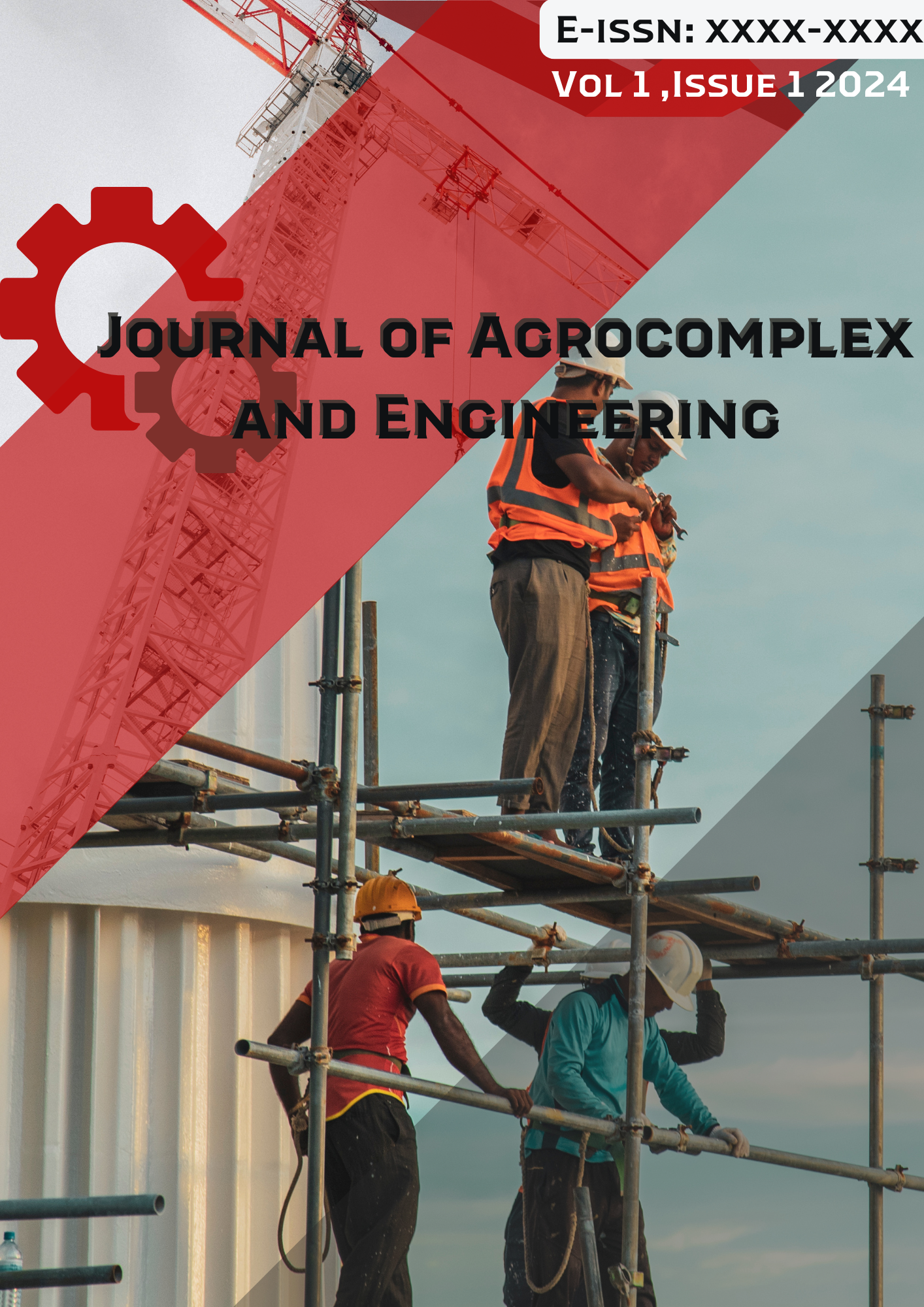Application of Machine Learning Methods to Predict Corn Harvest Yields Based on Climate Data
Keywords:
Machine Learning , Corn Yield Prediction, Climate DataAbstract
Purpose: The study aims to evaluate the effectiveness of machine learning (ML) methods in predicting corn yields under climate variability, addressing the limitations of traditional statistical models in capturing nonlinear and dynamic crop–environment interactions.
Subjects and Methods: Machine learning algorithms including Random Forest (RF), Gradient Boosting Machines (GBM), Gaussian Process Regression (GPR), and Support Vector Regression (SVR) were applied to datasets comprising climatic, soil, and vegetation index (VI) variables. Model performance was assessed using standard evaluation metrics such as the coefficient of determination (R²), root mean square error (RMSE), and normalized RMSE (nRMSE). Comparative analyses were conducted across different crop growth stages (V1–R6).
Results: Ensemble and hybrid models outperformed single algorithms, with GBM achieving the highest overall accuracy (R² ≈ 0.85; RMSE ≈ 0.45 t/ha). RF consistently served as a robust baseline across datasets. Multimodal integration of VIs, soil, and climatic variables significantly improved accuracy, particularly during early growth stages where VI-only models underperformed. At maturity, GPR and RF achieved strong performance (RMSE ≈ 1.80 Mg/ha; nRMSE ≈ 13.5%). SVR demonstrated resilience under conditions of reduced data availability, making it effective for in-season forecasts.
Conclusions: Machine learning provides a powerful and adaptive framework for corn yield prediction. By integrating diverse datasets and leveraging ensemble and hybrid models, forecasting accuracy can be improved for both early-season decision-making and end-of-season yield estimation. These results highlight the potential of ML to enhance agricultural resilience and inform climate adaptation strategies.
References
Adiaha, M. S. (2017). The impact of Maize (Zea mays L.) and it uses for human development: A review. International Journal of Scientific World, 5(1), 93-95.
Alemu, T., & Mengistu, A. (2019). Impacts of climate change on food security in Ethiopia: adaptation and mitigation options: a review. Climate change-resilient agriculture and agroforestry: Ecosystem services and sustainability, 397-412. https://doi.org/10.1007/978-3-319-75004-0_23
Aviles Toledo, C., Crawford, M. M., & Tuinstra, M. R. (2024). Integrating multi-modal remote sensing, deep learning, and attention mechanisms for yield prediction in plant breeding experiments. Frontiers in Plant Science, 15, 1408047. https://doi.org/10.3390/j6030028
Benson, V., Robin, C., Requena-Mesa, C., Alonso, L., Carvalhais, N., Cortés, J., ... & Reichstein, M. (2024). Multi-modal learning for geospatial vegetation forecasting. In Proceedings of the IEEE/CVF Conference on Computer Vision and Pattern Recognition (pp. 27788-27799).
Blanc, E., & Schlenker, W. (2017). The use of panel models in assessments of climate impacts on agriculture. Review of Environmental Economics and Policy.
Ghamisi, P., Rasti, B., Yokoya, N., Wang, Q., Hofle, B., Bruzzone, L., ... & Benediktsson, J. A. (2019). Multisource and multitemporal data fusion in remote sensing: A comprehensive review of the state of the art. IEEE Geoscience and Remote Sensing Magazine, 7(1), 6-39. https://doi.org/10.1109/MGRS.2018.2890023
John, D., Hussin, N., Shahibi, M. S., Ahmad, M., Hashim, H., & Ametefe, D. S. (2023). A systematic review on the factors governing precision agriculture adoption among small-scale farmers. Outlook on Agriculture, 52(4), 469-485. https://doi.org/10.1177/00307270231205640
Kang, Y., Ozdogan, M., Zhu, X., Ye, Z., Hain, C., & Anderson, M. (2020). Comparative assessment of environmental variables and machine learning algorithms for maize yield prediction in the US Midwest. Environmental Research Letters, 15(6), 064005.
Kaul, J., Jain, K., & Olakh, D. (2019). An overview on role of yellow maize in food, feed and nutrition security. International Journal of Current Microbiology and Applied Sciences, 8(02), 3037-3048.
Kuradusenge, M., Hitimana, E., Hanyurwimfura, D., Rukundo, P., Mtonga, K., Mukasine, A., ... & Uwamahoro, A. (2023). Crop yield prediction using machine learning models: Case of Irish potato and maize. Agriculture, 13(1), 225.
Li, J., Liu, Z., Lei, X., & Wang, L. (2021). Distributed fusion of heterogeneous remote sensing and social media data: A review and new developments. Proceedings of the IEEE, 109(8), 1350-1363. 10.1109/JPROC.2021.3079176
Lobell, D. B., & Burke, M. B. (2010). On the use of statistical models to predict crop yield responses to climate change. Agricultural and forest meteorology, 150(11), 1443-1452. https://doi.org/10.1016/j.agrformet.2010.07.008
Paloviita, A., & Järvelä, M. (2015). Climate change adaptation and food supply chain management: an overview. Climate change adaptation and food supply chain management, 1-14.
Raj, S., Roodbar, S., Brinkley, C., & Wolfe, D. W. (2022). Food security and climate change: differences in impacts and adaptation strategies for rural communities in the global south and north. Frontiers in Sustainable Food Systems, 5, 691191. https://doi.org/10.3389/fsufs.2021.691191
Romeiko, X. X., Guo, Z., Pang, Y., Lee, E. K., & Zhang, X. (2020). Comparing machine learning approaches for predicting spatially explicit life cycle global warming and eutrophication impacts from corn production. Sustainability, 12(4), 1481. https://doi.org/10.3390/su12041481
Shi, W., Tao, F., & Zhang, Z. (2013). A review on statistical models for identifying climate contributions to crop yields. Journal of geographical sciences, 23(3), 567-576. https://doi.org/10.1007/s11442-013-1029-3
Skoufogianni, E., Solomou, A., Charvalas, G., & Danalatos, N. (2019). Maize as energy crop. Maize-Production and use, 1-16.
Steenwerth, K. L., Hodson, A. K., Bloom, A. J., Carter, M. R., Cattaneo, A., Chartres, C. J., ... & Jackson, L. E. (2014). Climate-smart agriculture global research agenda: scientific basis for action. Agriculture & Food Security, 3(1), 11. https://doi.org/10.1186/2048-7010-3-11
Suprayitno, D., Iskandar, S., Dahurandi, K., Hendarto, T., & Rumambi, F. J. (2024). Public policy in the era of climate change: adapting strategies for sustainable futures. Migration Letters, 21(S6), 945-958. https://doi.org/10.3389/fsufs.2019.00037
Zhang, Y., Li, L., Zhang, Z., & Li, B. (2025). Multimodal learning for vegetation patterns classification in global arid and semi-arid regions. Chaos, Solitons & Fractals, 194, 116187. https://doi.org/10.1016/j.chaos.2025.116187
Zhu, X., Cai, F., Tian, J., & Williams, T. K. A. (2018). Spatiotemporal fusion of multisource remote sensing data: Literature survey, taxonomy, principles, applications, and future directions. Remote Sensing, 10(4), 527. https://doi.org/10.3390/rs10040527
Downloads
Published
Issue
Section
License
Copyright (c) 2025 Journal of Agrocomplex and Engineering

This work is licensed under a Creative Commons Attribution-ShareAlike 4.0 International License.






